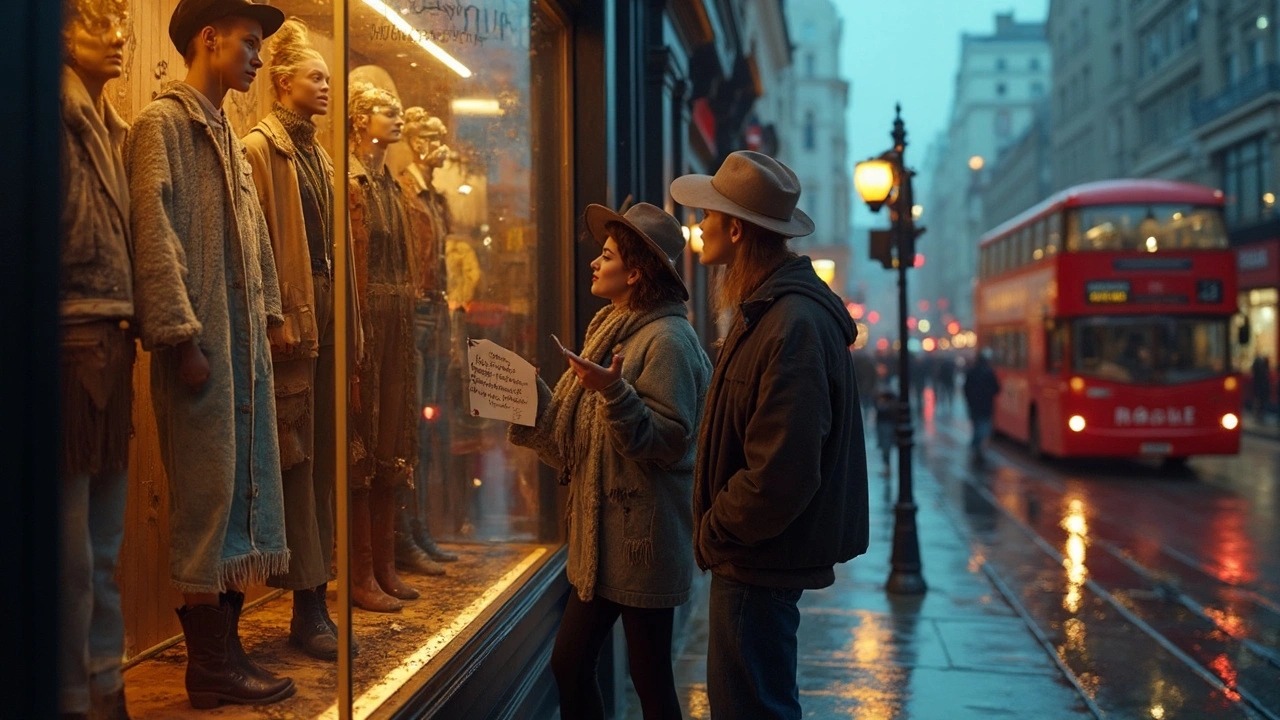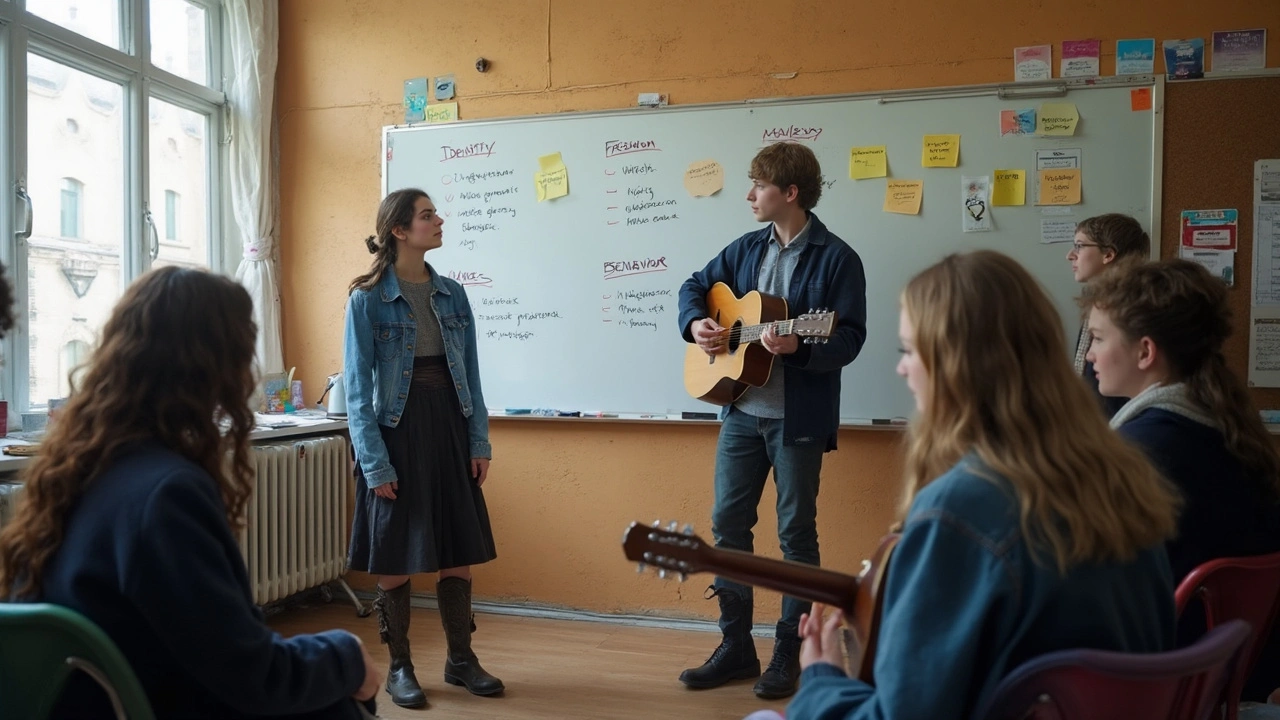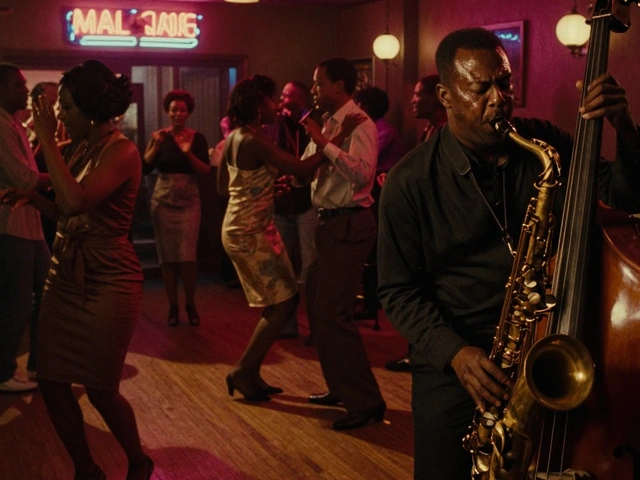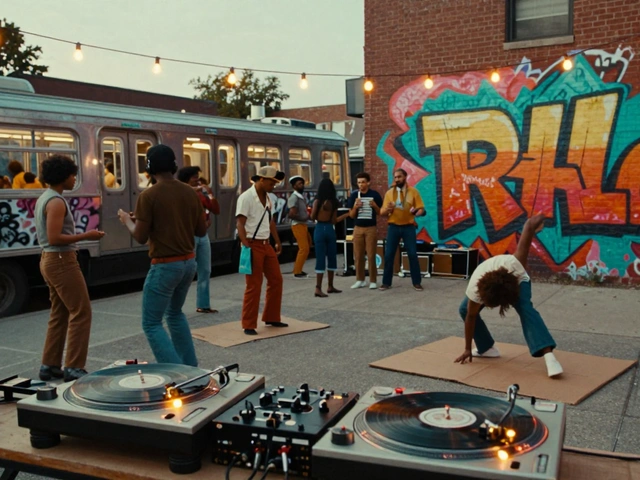TL;DR
- Country is having a mainstream Gen Z moment: big charts, viral TikTok hooks, and cross-genre collabs.
- Impact shows up in identity (belonging, roots), fashion (western-core), values (work ethic, authenticity), and social behavior (community, concerts, line dancing).
- Data is clear: country streaming and crossover airplay surged in 2023-2024 (Luminate; IFPI), while TikTok drives discovery for teens (TikTok Music Impact Report 2023).
- It’s not all rosy: some lyrics can normalize drinking or tired stereotypes. Context and media literacy matter.
- Parents, teachers, and brands can use country as a bridge: pick clean edits, discuss themes, spotlight diverse voices, and tie songs to real-life skills.
Why Country Hits Gen Z Right Now (and What That Changes)
Here’s the short version: teens care about belonging and realness. Country songs deliver plain-spoken stories about work, love, friends, money stress, and small victories. Add a hook that works on a 12‑second video loop and you’ve got a culture wave, not just a playlist trend.
What makes this different from past booms? Three shifts:
- Crossovers crushed the gates. In 2023-2024, tracks from Zach Bryan, Luke Combs, Lainey Wilson, and Beyoncé’s Cowboy Carter era blurred lines with pop, rock, and R&B. Teen listeners didn’t need to “like country.” They liked a song that just happened to be country.
- Short-form video did the heavy lifting. TikTok sped up discovery and ritualized dances, two-step tutorials, and “cowboy transition” fits. Teens learn culture by doing, not just listening.
- Western-core fashion turned social. Boots, denim, bolo ties, and pearl snaps aren’t only rural; they’re cosplay-ready and camera-friendly. Style became a weekend identity anyone can try.
So what’s actually changing in youth culture?
- Identity and belonging: Country scenes-school hoedowns, campus country nights, DIY barn parties-give teens low-pressure rituals. You don’t need elite dance skills to fit in.
- Values signaling: Lyrics preach work ethic, loyalty, local pride, and soft-hearted toughness. That resonates with teens who want clear values without sounding preachy.
- Behavioral patterns: More group hangs around line dancing and live gigs, fewer isolated headphone nights. Concerts and community events become social anchors.
- Style: Western-core gives affordable, remixable pieces (thrift denim, secondhand boots). One jacket flips a basic outfit into a vibe.
- Language and memes: Country idioms and “coastal cowgirl” humor fold into daily chat and captions.
Quick caveat: impact is mixed by region and background. A kid in Perth, Sydney, or Auckland relates differently than someone in Nashville or Tamworth. But the shared signals-storytelling, honest vocals, DIY dance scenes-travel well.
The Data You Need: Signals, Platforms, and What to Watch
You don’t have to guess. The metrics back up the cultural shift.
- Streaming growth: Luminate reported country on‑demand audio streams jumped by roughly 20% year over year in 2023, the strongest among major genres. The pace stayed hot into 2024 as crossover hits kept pulling in non‑country listeners.
- Global revenue context: IFPI’s Global Music Report 2024 notes streaming as the majority of recorded music revenue worldwide. Country benefits most when songs travel beyond radio.
- Discovery engine: TikTok’s 2023 Music Impact Report found about three‑quarters of users discover new artists on the platform, and short hooks from country tracks perform well with danceable or relatable snippets.
- Charts tell the story: In Australia, ARIA Singles in 2024-2025 featured country‑leaning crossovers (think the Shaboozey wave) and steady airplay for Luke Combs and Zach Bryan. Youth attention is clear when country shows up in school playlists and weekend events.
- Live is sticky: Post‑pandemic, country festivals and campus country nights pack out because they’re participatory-line dancing lowers social friction for teens who hate club norms.
Read the signals like a scout. If you’re a parent, teacher, or youth worker, watch these five dials:
- Local events: Are country‑themed nights popping up at schools or community centers?
- Wardrobe shifts: Boots and pearl snaps in weekend fits suggest identity play, not just music tastes.
- Playlist drift: More acoustic or twang on kid’s Spotify/Apple Music libraries means values‑oriented stories are landing.
- Video loops: Two‑step tutorials or cowboy fit changes on their feed? That’s habit‑forming culture.
- Collab chatter: Teens mention artists crossing lanes (R&B, hip‑hop, pop) more than “pure” country-expect a broader tent.
Here’s a compact map of what to track and why it matters.
| Youth signal | What it suggests | Useful response | Source cue |
|---|---|---|---|
| Country on school/uni event calendars | Community rituals forming | Offer beginner line‑dance workshops | Local programming; student union listings (2024-2025) |
| Boots/denim in weekend posts | Style identity testing | Lean into thrift/repair; avoid gatekeeping | Instagram/TikTok visual trends (2023-2025) |
| Cross‑genre playlists (Zach Bryan → Noah Kahan → Kacey Musgraves) | Values over genre loyalty | Pick songs by theme, not label | Luminate listening pathways (2023) |
| Two‑step tutorials spreading | Low‑barrier social bonding | Host “learn‑a‑move in 10 minutes” segments | TikTok creator analytics patterns (2023-2024) |
| Clean edit requests | Social mixing of ages/spaces | Use radio edits + lyric sheets | AAP media guidance on age‑appropriate content (2023) |
What about risks to teens? Two to watch:
- Lyrics and alcohol normalization: Plenty of country choruses treat drinking as celebration or coping. The American Academy of Pediatrics has long flagged media’s influence on teen risk behavior. Don’t panic-contextual talk helps more than bans.
- Narrow archetypes: Rural = “real” and urban = “fake” is an old trope. Modern country includes Black, Indigenous, and LGBTQ+ artists; spotlight them so teens see a full picture.
Rule of thumb: Track behavior, not just lyrics. Is your teen’s social life healthier-more friends, more offline fun, stable grades? The song might be a bridge, not a problem.

Real-World Examples: Songs, Scenes, and What Teens Actually Do
Let’s ground this in what you’ll actually see and hear.
- Playlist glue songs: Luke Combs’ “Fast Car” cover turned a quiet story into a stadium sing‑along; teens felt the emotion without needing genre history. Zach Bryan’s “Something in the Orange” circulates in “soft masculinity” edits. Kacey Musgraves and Lainey Wilson walk the line between classic storytelling and modern pop polish.
- 2024’s country‑pop‑rap moment: Beyoncé’s Cowboy Carter era reframed country as American heritage for everyone. Shaboozey brought bar‑anthem bounce with a country twang and hip‑hop cadence-algorithm gold for teens who like bass and boots.
- Dance as social lubricant: A two‑step is teachable in five minutes. At school socials, you’ll see circles forming to teach steps, then pairs cycle in and out. It’s friend‑making on rails.
- Local scenes: In Australia, Tamworth Country Music Festival and Gympie Music Muster act like on‑ramp culture-teens go with family, catch a new favorite, buy their first hat, and come home with stories. In cities like Perth and Melbourne, bar nights with beginner line‑dance lessons are entry points.
- DIY creativity: Teens splice country hooks into short comedy bits, cosplay ranch looks in thrifted gear, and cut fan edits over acoustic bridges.
How this shapes identity
- Belonging without cliques: Country nights attract sporty kids, drama kids, and shy kids. A few basic steps and you’re in.
- Values practice: Songs about showing up for friends, putting in a shift, or saving up for a truck map onto teen goals-first job, first car, first road trip.
- Gender scripts, updated: Tender male leads and confident female narrators give teens more ways to show care and strength. That’s healthy modeling.
But be real about the trade‑offs
- Echo chambers can form: If a teen’s feed narrows to one aesthetic, they might pick up lazy stereotypes. Counter with diverse artists (e.g., Breland, Mickey Guyton, Orville Peck) and collab tracks.
- Consumption vs. creation: It’s easy to loop a chorus 200 times. Nudge toward doing-learn a riff on guitar, write a verse, or try out a local open mic.
Quick classroom example
- Theme pairing: Use a song about work ethic alongside a short story on resilience. Students annotate lyrics, link to the text, and discuss what “showing up” means in real life.
- Numeracy angle: Budgeting a truck in a lyric? Turn it into a math task-payments, fuel costs, hours at a part‑time job.
- Media literacy: Compare radio edit vs. album version; discuss why edits exist and how context shifts meaning.
Action Playbooks, Checklists, and Quick Answers
This is where you turn culture into practical wins. Whether you’re a parent, teacher, youth worker, brand, or an artist trying to reach Gen Z, pick the lane that fits.
Playbook: Parents/Guardians (15‑minute weekly check‑in)
- Ask, don’t quiz: “What’s your current earworm? What do you like about it?”
- Listen once together: Use a clean edit. Pause once to ask, “What’s the story here?”
- Connect to life: “Reminds you of any real situation at school or work?”
- Set clear lines: Parties are fine; drinking isn’t. Link rules to safety, not punishment.
- Offer options: If a song’s a bit much, suggest adjacent artists with similar vibes but cleaner themes.
Playbook: Teachers/Youth Leaders (one session)
- Pick one theme (belonging, work, forgiveness). Choose two songs with different angles.
- Lyric walk‑through: Hand out printed lyrics. Students mark lines that feel “true.”
- Two‑step primer: 10 minutes to learn a basic step. Celebrate effort, not perfection.
- Reflect & tie‑back: Quick write-“One place I could apply this value this week.”
- Exit ticket: “One artist I discovered” + “One question I still have.”
Playbook: Brands/Campus Events (budget‑friendly)
- Book a local act + beginner line‑dance host. Keep it welcoming.
- Wardrobe cue, not dress code: “Denim night” lowers pressure.
- Photo corner with thrift props. Make it inclusive, not caricature.
- Short‑form capture: Post a 10‑second step tutorial with credit to the instructor.
- Safety basics: Water stations and clear age policies. Country ≠ unlimited drinks.
Playbook: Emerging Artists
- Lead with the story: One vivid, specific detail per verse. Cut filler.
- Hook for short‑form: A chorus that works solo. No intro needed on TikTok.
- Collab across lanes: Feature a rapper or indie pop singer to widen the tent.
- Play three-in-a-row sets: One pure country, one crossover, one acoustic confessional.
- Metrics to watch: 10‑second view rate, save rate, and location tags for local gig targeting.
Checklists
- Song screen (for mixed‑age events): radio edit, lyric sheet, clean cover art, 30‑second “teach” segment available.
- Diverse artists roster: at least one woman, one BIPOC artist, one crossover act per set.
- Event setup: 10‑minute dance lesson, water, clear floor space, two ushers to rotate pairs so no one’s left out.
- Media literacy prompts: “What value is celebrated here?” “What coping strategy shows up?” “What’s exaggerated for fun?”
Pitfalls to avoid
- Gatekeeping: “That’s not real country.” Teens shrink away fast. Invite, don’t judge.
- Assuming causation: A drinking lyric doesn’t cause drinking. Keep the convo about choices and context.
- Caricatures: Cowboy cosplay can slide into mockery. Treat the culture with respect.
Rules of thumb
- One new song, one familiar: Anchor the room, then explore.
- Teach one move, repeat three times: Confidence beats complexity.
- Stories beat stats in the room; stats back up stories afterward.
Mini‑FAQ
- Does country music make teens drink? No. Exposure and behavior aren’t the same. The American Academy of Pediatrics highlights that adult guidance and peer norms matter more than a single song.
- Is country “too American” for Australian teens? Not really. Stories about work, mateship, and small‑town pride translate. Local festivals like Tamworth make it ours, too.
- What about harmful stereotypes? Counter with diverse artists and historical context. Country has always been broader than the cliché.
- My teen says they hate country but loves a Zach Bryan song. That’s normal. Teens follow emotions, not labels. Build from what they already like.
Next steps and troubleshooting
- If your teen’s feed narrows into one vibe: Add weekly “discover together” sessions-queue one adjacent artist from another genre with similar themes.
- If a school event gets rowdy: Switch set order-front‑load line‑dance segments and acoustic numbers. Keep high‑energy drinking anthems for audience‑only moments, not dance instruction.
- If a lyric sparks arguments at home: Use the “three questions” tool-What’s the story? What’s the takeaway? What would you do differently?
- If interest fades: Rotate novelty-new dance move, live acoustic guest, or a fashion swap corner with thrift finds.
- If you’re unsure where to start: Pick a values theme (loyalty, grit, forgiveness), choose two songs that hit it different ways, and build a 30‑minute session around that.
Credibility notes (so you know the receipts are real)
- IFPI Global Music Report 2024 for revenue/streaming share.
- Luminate 2023 and 2024 reporting for country streaming growth and crossover momentum.
- TikTok Music Impact Report 2023 for discovery rates among teens.
- American Academy of Pediatrics 2023 media guidance for youth risk and media context.
- ARIA charts 2024-2025 for Australia’s country‑leaning crossovers and airplay trends.
If you take away one idea, make it this: teens are building community through stories they can sing, steps they can learn in minutes, and outfits they can thrift on a budget. Meet them there. Use country music and youth culture as a bridge to talk about belonging, choices, and the kind of person they want to be.






